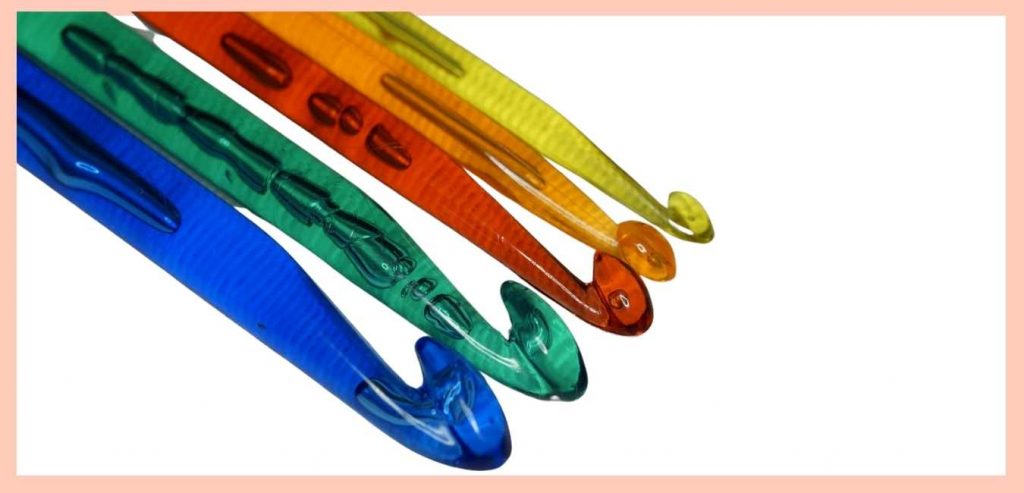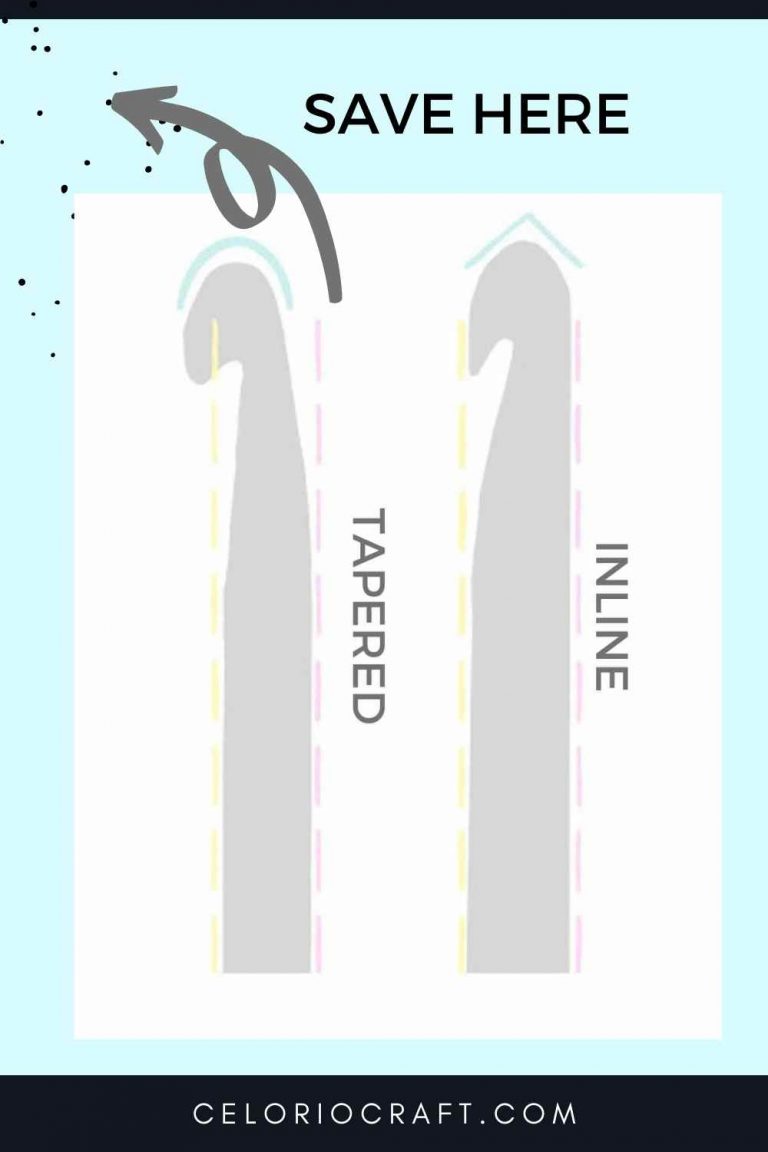In crochet hooks, as in almost everything in life, there is a lot of diversity. There are hooks of many sizes, of different shapes, of different prices and made of different materials.
I want to tell you a little about the materials that your hook can be made of, and above all give you some information about each one, so you can choose which one is the best for you and for your current project.
Table of Contents
- What materials is the crochet hook made of?
- Pros and Cons of each material.
- Materials your crochet hook may be made of, in Spanish, and why you should know about it
What materials is the crochet hook made of?
There are crochet hooks made of different materials such as aluminum, steel, plastic, acrylic, bamboo, wood, glass … And you may even find that there are some made of bone or ivory, of course they are some of the most expensive ones.
Let’s see below some characteristics of some of them, so you can keep them in mind while choosing the right one for you or your budget.
Pros and Cons of each material.
Metals

Pros: Aluminum hooks are the most readily available and used by most crocheters, especially beginners. On the other hand, the antique hooks are made of steel or other metals.
They are quite inexpensive hooks and are also very light, which makes them highly recommended if you are trying to maintain fabric tension and stitch uniformity.
Crochet hooks made of aluminum or any other metal tend to slide better while crocheting, in other words, it does not get stuck with the yarn and on the contrary it slides very well. This feature makes you can crochet a little faster than with hooks made of other materials. They are very light hooks, which makes them very useful.
Aluminum hooks are usually a very good option if you want to move faster on your project, if you are working with a yarn with many textures that would be more difficult to work with a hook made of a different material than aluminum, or if you simply like to crochet with hooks where the yarn slides more easily.
Cons: Because they are made of metal they are less flexible and more likely to cause pain in your wrist, and if you already suffer from pain or damage to your hands they are not recommended.
Another problem would be that the metal hooks if not stored and cared for properly can have rust, I have some very old ones that were my grandmother’s, and they are quite rusty.
The aluminum ones that I have are very well and without rust, I prefer them to the steel ones that are older.
Acrylic/ Plastic

Pros: Plastic hooks are very easy to find lately and also quite inexpensive. They are also quite flexible and therefore good for your hands.
They also have the characteristic that the yarn slides very well on them, although not as well as on aluminum hooks.
I would say that this ability to slide the yarn on them in the case of plastic ones is between aluminum and wood or bamboo. Of course, this also depends on the yarn we are using in each case.
There are conventional size and jumbo size. The later ones are light in spite of their size because they are hollow inside.
Cons: The plastic causes friction and static which can affect some fibers. Depending on the friction, it can even felt the wool a little.
Wood/ Bamboo

Pros: Bamboo hooks have the characteristic of being light and feel warmer in your hands than those made of other materials such as aluminum.
Cons: They are used to work with thicker yarns and have the characteristic that the stitches do not slide much. For beginner crocheters they are not recommended, although it is all a matter of taste and practice.
There are not usually small diameter hooks, they are usually thicker. And the hooks that are made of harder woods or precious woods are usually quite expensive.
Materials your crochet hook may be made of, in Spanish, and why you should know about it
You already know that my mission is to teach you how to crochet patterns in Spanish, even if you don’t know anything about this language.
That’s why in every post I’m leaving you terms that will be useful when you are going to crochet a pattern in Spanish and in this one you can’t miss them.
And you may wonder why you need to know the materials your hook is made of, in Spanish, the answer is very easy:
In some patterns, the designer may advise you to use a hook of a certain material to obtain a specific result or to make the process easier for you.
I leave you then how to say the materials the crochet hook can be made of, in Spanish:
- Aluminio: aluminium
- Acero: steel
- Plastico: plastic
- Acrílico: acrylic
- Bambú: bamboo
- Madera: wood
- Vidrio: glass
- Hueso: bone
- Marfil: ivory
Now that you know the materials used to make crochet hooks and the pros and cons of using each one, it’s time to practice with several of them to get your own experience. You already have the knowledge you need to choose the most suitable hook for your circumstances or your project.
I hope you have found this information useful and that you can now decide which hook is best for you for each occasion.
Save this post on Pinterest for when you need it.

Are you on Instagram? If so, Find Me there!
Have a good crochet time!
